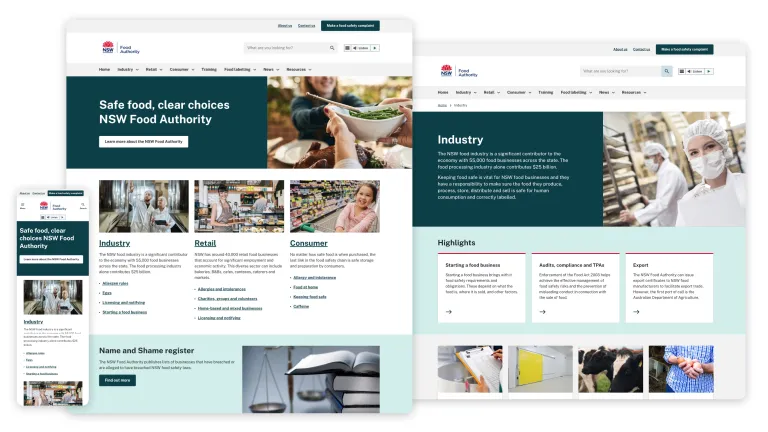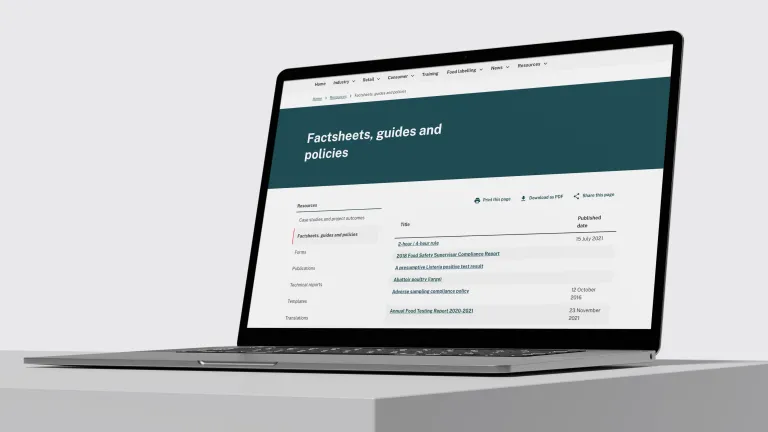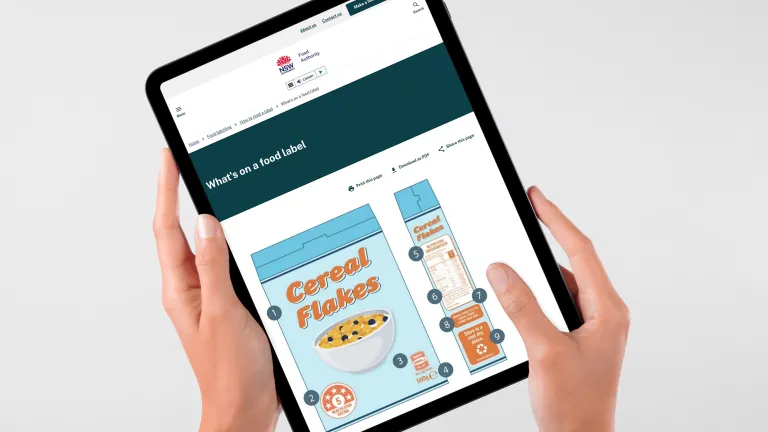Overview
IA & Discovery | User experience design | Convivial for GovCMS | Drupal web development | Integrations | Accessibility
The NSW Food Authority regulates and monitors food safety across the entire food industry supply chain in NSW. It plays a vital role in protecting the health and wellbeing of the people in NSW through mitigating food safety risks, rapidly responding in the event of a food safety incident and providing education, training and technical information to consumers and industry.
The NSW Food Authority engaged Morpht to redevelop, refresh the design of its website and migrate the content from TRIM WCMS to GovCMS. The aim was to move to a scalable platform that delivers high-quality security protection and compliance.
NSW Food Authority expected the site to be architecturally sound, only needing improvements to its accessibility and mobile responsiveness.

The challenge
As with any site migration we’ve undertaken in the past, we were ready to delve into the site setup and CMS database to work out how to best extract pages, content types and define their inter-relationships. We found that TRIM CMS exposed content in HTML and XML with related documents. We identified:
- 6221 HTML pages
- 808 XML unique pages
- 1197 files
We extended that content with two external systems integrated into the site to surface a register for Approved Third Party Auditors and the ‘Name and Shame’ registers. Another hurdle in this race was the sourcing of content images stored on a different server to the site.
The outcome
Morpht went through an extensive discovery phase to re-structure the IA, define new content types and integrate multiple feeds for export to improve the user experience. Along with a fresh, modern and accessible design to drive up the usability of the site to help users discover relevant information on any device in the most straightforward way.

“Morpht’s approach to the project was focused on delivering value in the most efficient way. Their team complemented ours in a tight collaboration, providing valuable and prompt advice when and where needed. The toolset they delivered has enabled us to create pages and content and be highly responsive when rapid changes are required.. The resulting website is a success seeing a year on year 9.7% increase in traffic and 44% increase in time on page.”
Josephine Parrett
Manager Customer Service, Strategy & Operations | NSW Food Authority










